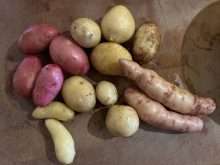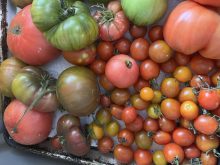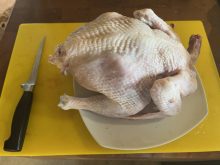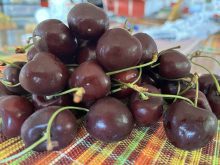My Saskatchewan-raised mom never served lamb while I was growing up. She hadn’t eaten it as a child or young woman, and as a result, I didn’t learn to love lamb until I was in my 30s and living in Calgary. Sheep have been a presence in Alberta since the late 1800s, when thousands of black-faced Merinos were herded north from Montana to Cochrane. The woolly newcomers proved hardy and adaptable to the Alberta climate. In fact, sheep ranchers and cattle ranchers had regular disagreements about grazing rights; the cattle ranchers claimed that sheep grazed the grass too closely to the soil, leaving nothing for other animals. In other parts of the world, sheep were frequently sent to graze in forests as a natural fire preventive. But in Alberta, the legislature of the time enacted a controversial bill that limited sheep grazing in Alberta, prohibiting the animals from the southern international border to as far north as the Bow River in 1884.
Nowadays, dozens of breeds of sheep graze Alberta’s hills and flatlands from Peace River to Pincher Creek, and to a lesser extent across the rest of Western Canada, including several breeds of “hair” sheep. These breeds, including Barbados Blackbelly, Dorper, and Katahdin, are lanolin free. Lanolin is what gives lamb and mutton its characteristic taste and aroma, and without wool or lanolin, the meat is noticeably milder.
My family and I are not alone in our lamb love affair. Lamb consumption in Canada is on the rise, reflecting the changing nature of Canada and a growing population of new arrivals arriving from many regions that have an ensconced tradition of lamb consumption. This gives cooks a wide window of how to season lamb: the classic dictum of “what grows together goes together,” is a good guide. Rosemary, lavender, thyme, and oregano flourish on southern European hillsides, where lamb is prized, so use any or all. Mediterranean cuisines from both sides of the sea feature lamb: Greek lamb is simply rubbed and roasted with lemon, oregano, olive oil and garlic; North African lamb tagine can be spiked with dried apricots and cumin. Olive tapenade or garlic aioli with smoked paprika are delicious with rosemary-scented lamb burgers. Spices, coconut milk and kaffir lime leaves, or cumin, coriander, turmeric, and the other warm spices of the curry palette reflect lamb’s presence in the diets of the Middle and Far East.
To find locally raised lamb, read the menu at your favourite restaurant and ask who supplies the kitchen, visit independent butchers or farmers’ markets, and browse the internet using key words like “local lamb” and your province’s name. When possible, order direct from the producer. First we eat, then we discuss what to serve with lamb.
Lamb Korma
Mumbai-born chef, Jyubeen Kacha, adds ground cashews as a thickening agent that adds mouth feel to this lush braise. If you are not a lamb fan, substitute turkey legs or chicken thighs. Like most braises, this dish reheats well. Serve with basmati rice and naan. Serves 6.
Read Also

Gentle treatments for pain in the neck
Heading toward year-end, people unknowingly tense up against the cold and busyness, causing neck pain that can often be treated with appropriate support and gentle mobility, athletic therapist Kathlyn Hossack says.
- 2 tbsp. butter, vegetable oil or ghee
- 1 tsp. cumin seed
- 1 tsp. mustard seed
- 2 bay leaves
- Kosher salt, to taste
- 2 onions, minced
- 6 cloves garlic, minced
- 1 tbsp. minced ginger root
- 1/2 tsp. turmeric
- 1 tsp. ground coriander
- 1 tsp. chili powder
- 2 tomatoes, chopped
- 2 tsp. garam masala
- 3 c. stock (chicken, beef or vegetable)
- 3 lbs. lamb shoulder, cubed
- Kosher salt and pepper, to taste
- 1/2 c. whole-milk yogurt (optional)
- 1/2 c. finely ground cashews (optional)
- Juice of 1 lemon
- Spearmint and cilantro leaves for garnish
Heat the butter, oil or ghee in a sauté pan and add the cumin, mustard and bay. Cook for a minute over medium-high heat, then add the onions. Sauté for 5 to 10 minutes. When they soften and begin to colour, season sparingly with salt.
Add the garlic and ginger with a pinch of salt, turmeric, coriander, chili powder and tomatoes. Reduce the heat, stir in a little water as needed to prevent sticking, and add the garam masala. Cook on medium-high heat until sauce thickens.
Add the stock and meat. Season with salt and pepper to taste and bring to a boil.
Cut a circle of parchment paper the same diameter as the pot and place it snugly directly on top of the liquid and meat, then cover securely. Reduce heat to a simmer. Cook for 2 hours or until tender.
Remove lid, stir well, and boil briskly to thicken if the sauce is too thin.
Add the optional yogurt and cashews and reheat gently. Adjust seasoning with lemon juice, salt and pepper to taste. Serve hot with mint leaves or cilantro as garnish.
















